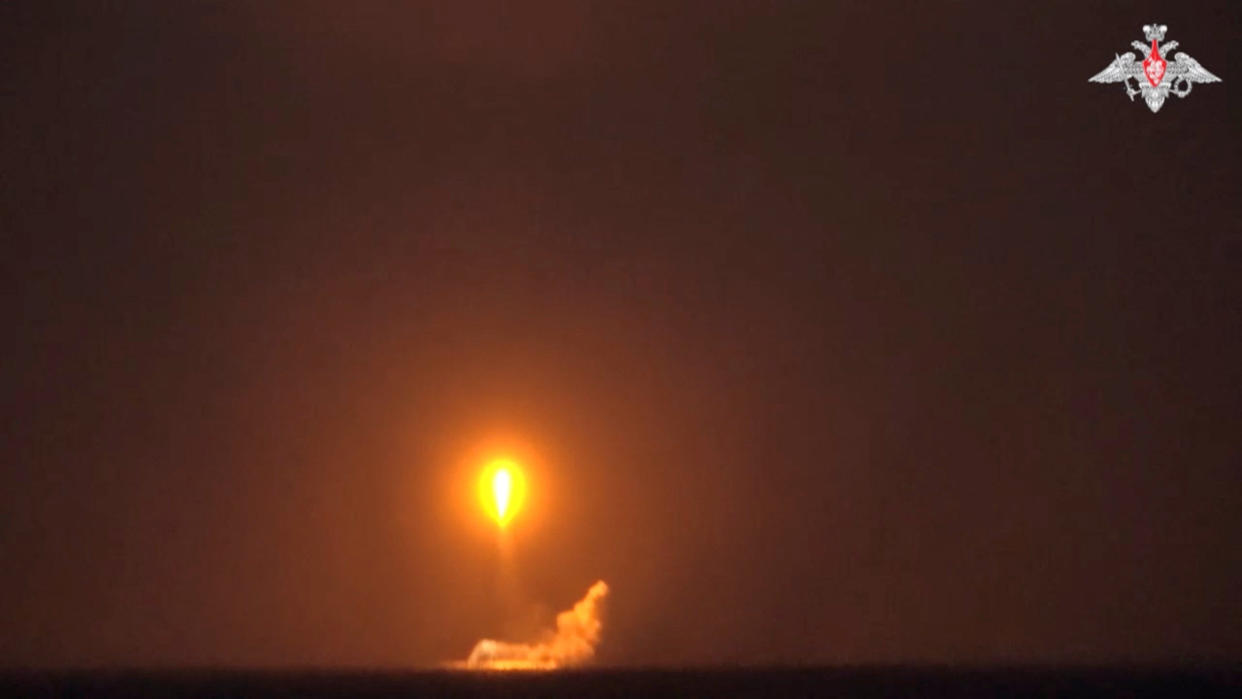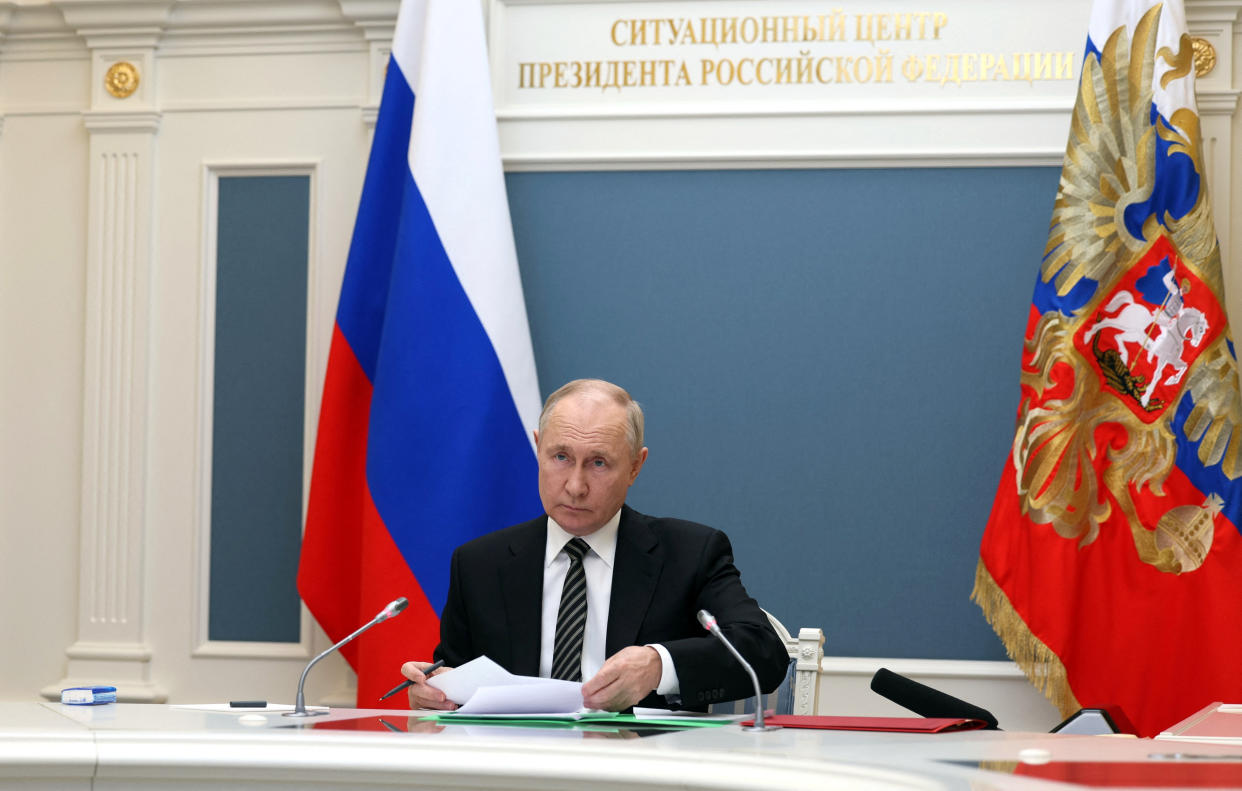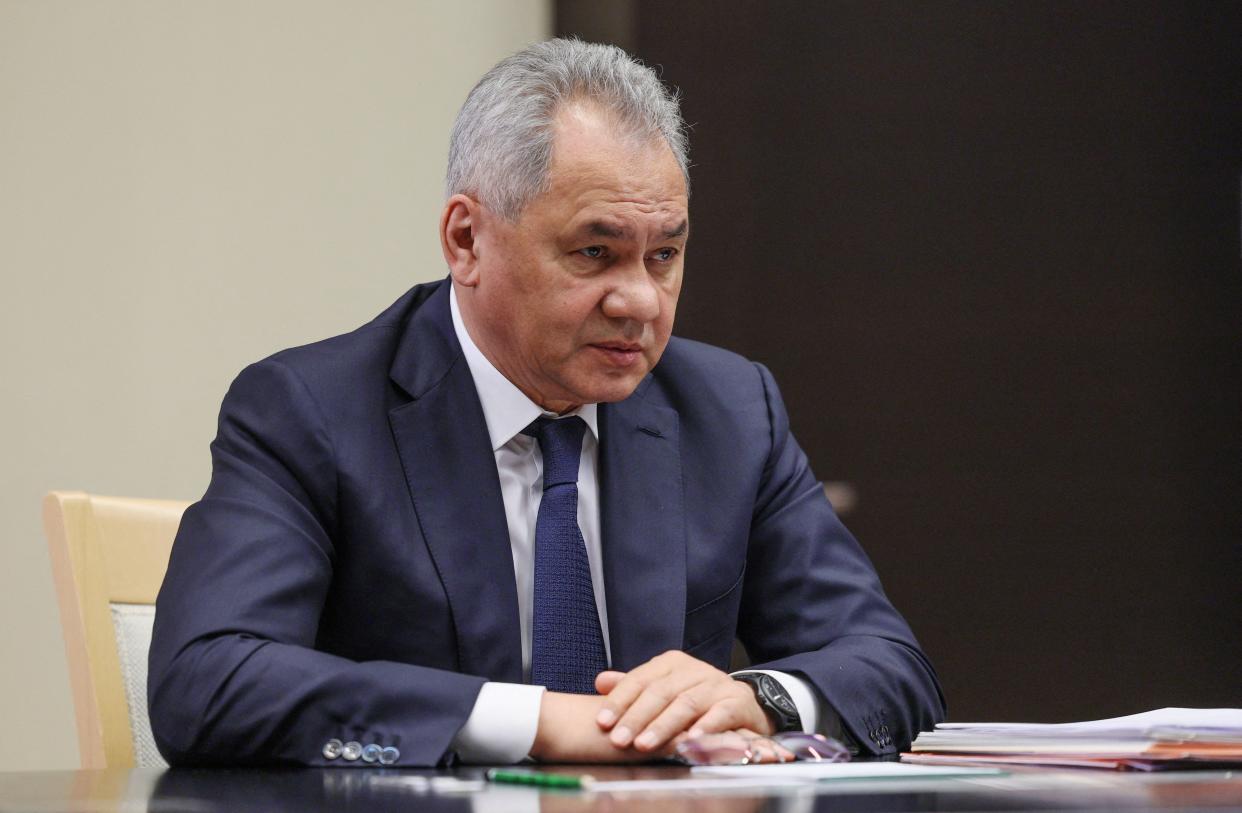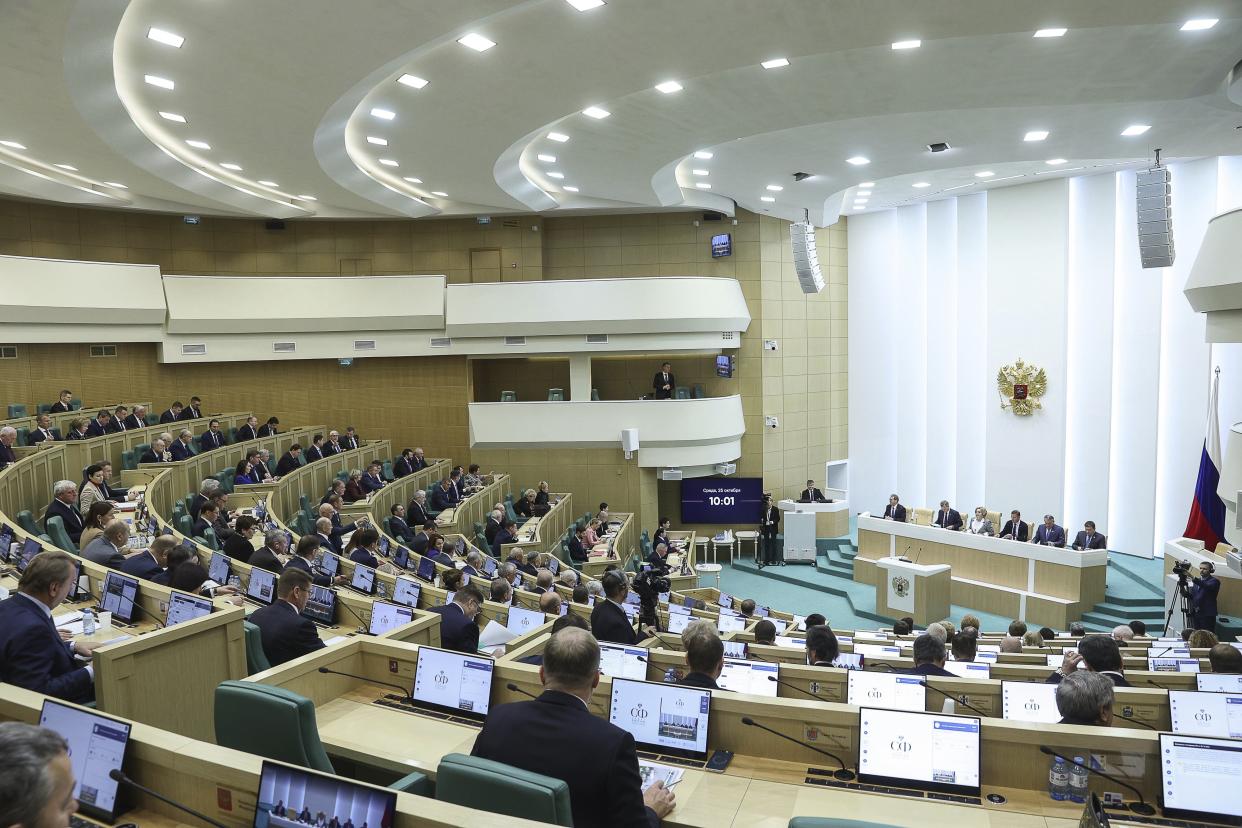Russia releases video of 'massive' retaliatory nuclear strike drill - watch
Russia has carried out tests amid tensions with the West over the Ukraine war soar.
It comes as Russia passed a law withdrawing from a treaty that bans nuclear test explosions.
Russia‘s defence minister Sergei Shoigu said the test was a rehearsal for "a massive nuclear strike" in response to an aggressor's nuclear attack.
Watch: Russia tests missiles as it de-ratifies nuclear treaty
Russia has displayed a show of force after it released a video showing its test of a “massive” retaliatory nuclear strike.
In the clip, a Yars intercontinental ballistic missile is seen being fired from a test site at a target in Russia's far east.
A Kremlin statement said that a nuclear-powered submarine also launched a ballistic missile from the Barents Sea, while Tu-95MS long-range bombers test-fired air-launched cruise missiles.
The footage of the exercise, published by Russia’s defence ministry, shows the land and submarine-based missiles noisily streaking into the night sky and a nuclear-capable bomber aircraft taking off from an airfield under the cover of darkness.

Recommended reading
Russia disregards losses, presses on in Ukraine's Avdiivka (Reuters)
Russian casualties in Ukraine war approaching 300,000, UK says(HuffPost)
Vladimir Putin 'fine', Kremlin says amid more reports of illness(Sky News)
Ukraine war in maps: Russia says it foiled attempts by Ukraine to cross Dnipro River(Euronews)
State TV showed defence minister Sergei Shoigu reporting by video link to Russian president Vladimir Putin on the exercise, which he said was a rehearsal for "a massive nuclear strike" in response to an aggressor's nuclear attack.
It said: "In the course of the events, the level of preparedness of the military command authorities and the skills of the senior and operational staff in organising subordinate troops were tested.
"The tasks planned in the course of the training exercise were fully accomplished."

Similar drills are held every autumn but the latest test – and Shoigu’s comments – come amid tensions between Russia and the West due to the ongoing conflict in Ukraine.
On Wednesday, Russia’s military said its air defence forces had shot down two long-range US-made ATACM missiles fired by Ukraine at Russian targets.
Ukraine said last week it had used the missiles for the first time, inflicting heavy damage on two airfields housing Russian helicopters and other equipment.
Putin last week ramped up his rhetoric, saying that the US was “making another mistake” by providing missiles to Kyiv.

Why is Russia conducting this nuclear test?
It is not unusual for Russia to carry out nuclear drills but the timing of this particular test is relevant.
On the same day as this particular test was carried out, Russia’s parliament passed the final stage of a law that would withdraw them from the Comprehensive Nuclear Test Ban Treaty (CTBT).
The CTBT, which was agreed in 1996, bans "any nuclear weapon test explosion or any other nuclear explosion" anywhere in the world.
Its aim is to reduce and ultimately rid the world of nuclear weapons and stop countries from building more advanced ones.
A total of 187 countries have signed the treaty – including Russia – who also ratified it, making it officially valid.
However, Russia is withdrawing the ratification, saying they are “mirroring” the US – who signed the treaty in 1996 but did not ratify it.

The nuclear drill comes after Putin has raised nuclear threats since the Ukraine war started.
Analysts say that Putin could use nuclear tests as another veiled warning to the West over its support of Ukraine – especially if Russia’s fortunes decline.
James Acton, co-director of the nuclear policy program at the Carnegie Endowment for International Peace, said:"I think testing is both a symptom of growing tensions, and would also further exacerbate those tensions."
The US last week confirmed it had conducted a chemical explosion at its test site in Nevada "to improve the United States' ability to detect low-yield nuclear explosions around the world".
Russia’s deputy foreign minister Sergei Ryabkov said the Nevada explosion was "undoubtedly a political signal" ahead of the vote to de-ratify.
He said: "As our president said, we must be on alert, and if the United States moves towards the start of nuclear tests, we will have to respond here in the same way.”
Additional reporting by Reuters.


